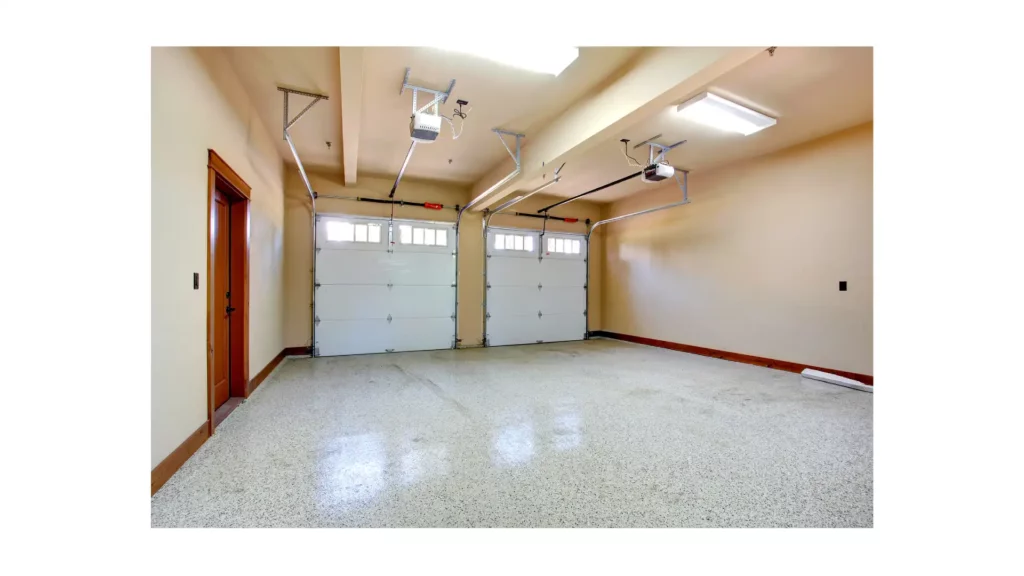In today's eco-conscious world, the emphasis on energy efficiency has never been greater. As homeowners and DIY enthusiasts seek to enhance their living spaces while reducing energy consumption, one area that often gets overlooked is the garage.
Yet, efficient garage lighting can transform this often dim and overlooked space into a bright, welcoming area. Whether you're using your garage as a workshop, storage area, or even a home gym, the right lighting can make all the difference.
This comprehensive guide will delve deep into the world of efficient garage lighting, ensuring your space is not only well-lit but also energy-efficient.
Understanding the Importance of Efficient Garage Lighting
Efficient garage lighting serves a dual purpose: it illuminates your space for safety and functionality while minimizing energy consumption and costs.
Proper lighting in the garage can prevent accidents, make tasks easier, and even deter burglars.
However, with a variety of lighting options available, selecting the most efficient solution requires understanding the different types of lighting technologies and their benefits.
Read also our post on Garage Door Electricity
The Basics of Lighting Efficiency
When we talk about efficient garage lighting, we're referring to lighting solutions that provide the highest quality of light with the least energy use.
This includes considering the lumens per watt ratio, which measures the amount of light produced per unit of energy consumed.
High-efficiency lighting fixtures can significantly reduce your electricity bill and decrease your carbon footprint.
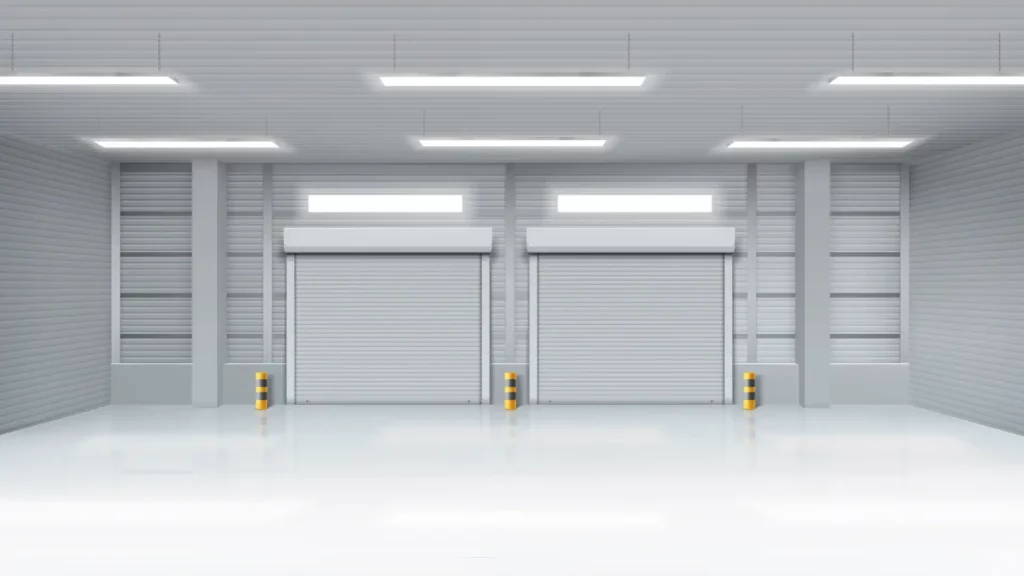
Types of Efficient Garage Lighting
- LED Lighting: Light Emitting Diodes (LEDs) use a fraction of the energy of traditional bulbs and have a much longer lifespan, offering bright, even lighting perfect for garages.
- Fluorescent Lighting: Offering a high output of light over large areas, fluorescent lights are less energy-efficient than LEDs but are still a popular choice due to their energy-efficient models.
- High-Intensity Discharge (HID) Lighting: Including metal halide and high-pressure sodium lights, HID lights are used in commercial settings or outdoors for spaces requiring high levels of brightness.
- Compact Fluorescent Lamps (CFLs): These are smaller than traditional fluorescent lights, fit into standard fixtures, use about one-third the energy of incandescent bulbs, and last up to ten times longer.
- Solar-Powered Lighting: For garage exteriors and entryways, solar-powered lights use renewable energy from the sun, reduce electricity costs, and are easy to install.
- Halogen Lighting: Offering a bright, focused light closer to natural daylight, halogen lights are more energy-efficient than incandescent bulbs but produce more heat and have a shorter lifespan.

Planning Your Garage Lighting Layout
Designing an effective lighting layout for your garage requires more than just selecting energy-efficient bulbs; it demands a strategic approach to placement and type of lighting to ensure your space is uniformly illuminated, and free from shadows and dark spots.
To achieve a well-lit garage that meets all your needs, consider incorporating the following elements into your lighting plan:
- Task Lighting: Essential for workbenches or any area where you perform detailed tasks, targeted task lighting minimizes eye strain and enhances precision.
- Ambient Lighting: The foundation of your garage's lighting, ambient lighting, provides the overall illumination of the space. Opt for efficient garage lighting solutions that distribute light evenly, eliminating glare and ensuring a comfortable level of brightness throughout.
- Safety Lighting: Critical for avoiding accidents, safety lighting illuminates entry points, pathways, and any potential trip hazards
- Accent Lighting: While often overlooked in garage spaces, accent lighting can highlight architectural features, display areas, or prized possessions, such as a classic car.
- Overhead Lighting: In garages with high ceilings, overhead lighting fixtures provide essential ambient lighting that covers broad areas. Choose high-output LED lights or fixtures designed for large spaces to ensure adequate illumination from above.
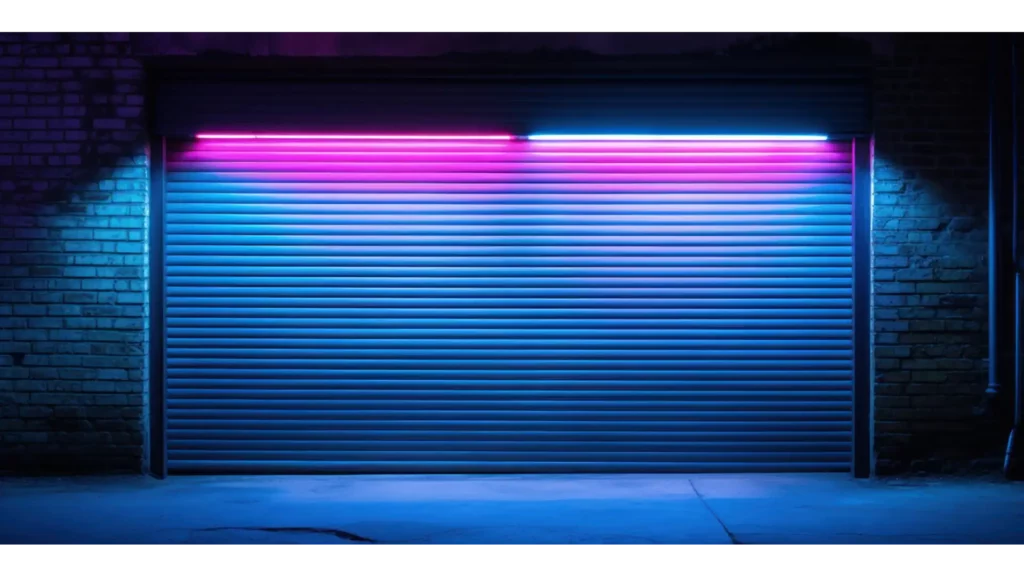
Enhancing Your Workspace with Efficient Shop Lighting
When it comes to setting up the ideal workspace, efficient shop lighting stands out as a critical component for both productivity and energy savings.
Implementing efficient shop lighting not only brightens the workspace, making detailed tasks easier and reducing eye strain, but it also significantly cuts down on energy consumption, leading to lower utility bills.
Shop owners and hobbyists are increasingly opting for energy-efficient lighting options like LED fixtures with motion sensors or timers.
This helps create a well-lit environment without wasting energy, reflecting a trend towards environmental and economic awareness.
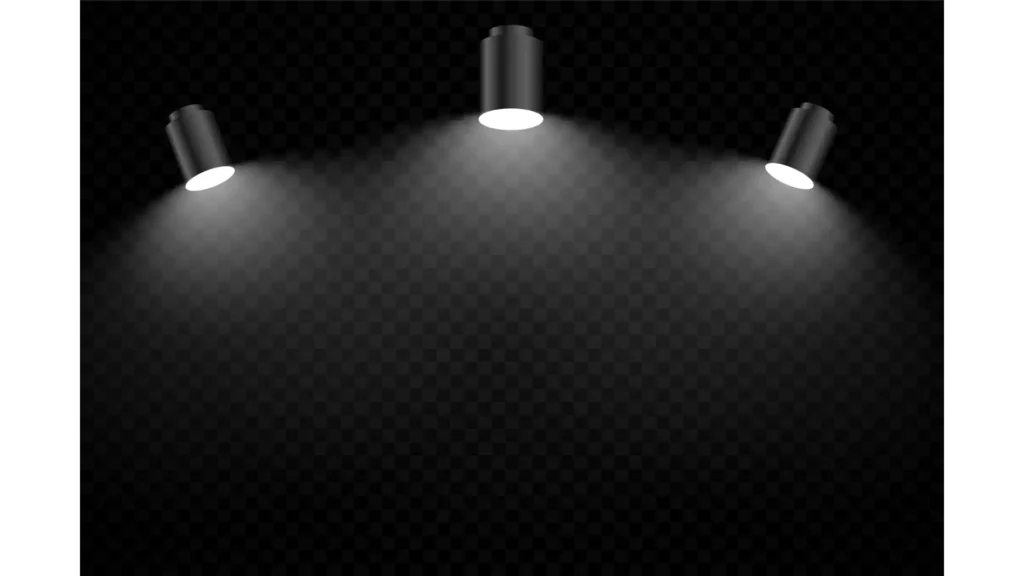
Installation Tips for Efficient Garage Lighting
Installing efficient garage lighting requires some planning. Here are a few tips to ensure a smooth installation:
- Consider the Height: For high ceilings, opt for LED lights, which offer brightness and a long range, ensuring the entire space is adequately lit.
- Use Reflective Surfaces: Apply white or light-colored paint on walls and ceilings to reflect light, diminishing the need for excessive fixtures and enhancing overall brightness with fewer resources.
- Smart Controls: Implement motion sensors, timers, and dimmers to optimize energy use. These technologies provide light only when necessary and adjust illumination based on the specific requirements of the moment.
- Plan for Overlap: When positioning lights, ensure their illumination zones slightly overlap to avoid dark spots. A well-considered layout can eliminate shadows and ensure consistent lighting throughout the garage.
- Electrical Capacity Check: Before installation, verify that your garage's electrical system can handle the new lighting, especially if you're planning a significant upgrade or adding high-power fixtures.
- Correct Fixture Placement: Strategically place fixtures to illuminate work areas directly and avoid placing lights behind where you'll be working to prevent casting shadows on your workspace.
- Outdoor Lighting Integration: For garages with outdoor access, consider integrating your garage lighting with exterior lights. This can enhance security and provide a seamless transition between indoor and outdoor spaces.

Maintaining and Upkeeping Your Efficient Garage Lighting for Optimal Performance
Ensuring that your efficient garage lighting continues to perform at its best requires a dedicated approach to maintenance and upkeep.
Regularly scheduled care not only extends the lifespan of your lighting fixtures but also preserves their energy efficiency and brightness.
Below are detailed practices to help maintain your garage lighting system:
- Routine Cleaning
Regularly clean lighting fixtures to prevent dust buildup, which can reduce brightness. Use a soft, dry cloth for LEDs and turn off power before cleaning.
- Inspect for Damage
Regularly check lighting fixtures for damage like cracks, loose connections, or water. Early detection can prevent damage and safety hazards. Ensure fixtures are securely mounted with no exposed wires or faults.
- Replace Faulty Bulbs Promptly
Monitor bulbs for flickering, dimming, or failing to light up. Promptly replace faulty LEDs to keep garage well-lit and energy efficient. Use high-quality replacements that match fixture requirements for optimal performance and longevity.
- LED Driver Check
The driver is essential for LED lighting systems, controlling power to the LEDs. If you see flickering or dimming, the driver might be the problem. Consult a professional for inspection and replacement if needed.
- Update Lighting as Technology Advances
Stay updated on lighting technology advancements for more energy-efficient and higher quality lighting. Consider upgrading fixtures or bulbs to improve lighting, reduce energy use, and access features like better dimming and color control.
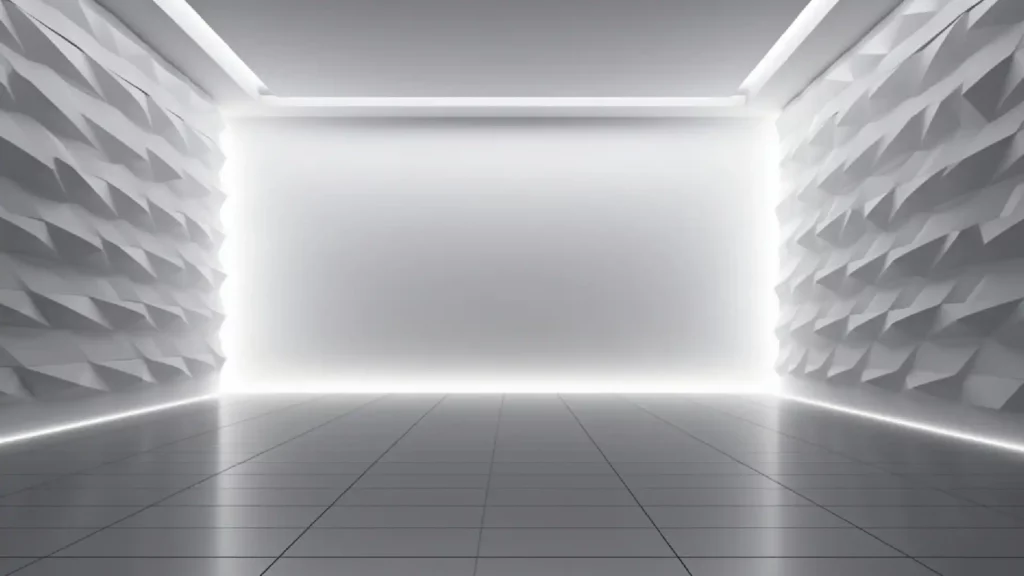
Maximizing Your Garage's Potential with Energy Efficient Garage Lighting
Energy efficient garage lighting is crucial for a sustainable and cost-effective home. It provides superior brightness, reduces energy consumption, and cuts utility bills.
This lighting option maximizes energy use for consistent and bright illumination, improving visibility and safety without high costs.
Switching to energy efficient garage lighting is an investment in a greener and more economical future for your home.
The Environmental Impact of Efficient Garage Lighting
Adopting efficient garage lighting significantly benefits the environment, encapsulating a range of positive impacts that extend far beyond mere energy savings. Here's a concise summary of the environmental advantages offered by efficient garage lighting:
- Reduction in Energy Consumption: Efficient lighting, like LEDs, demands less electricity, reducing the reliance on fossil fuels and lowering greenhouse gas emissions.
- Decrease in Greenhouse Gas Emissions: By minimizing energy use, efficient garage lighting helps cut down on carbon dioxide and other harmful emissions, combating global warming.
- Lesser Environmental Toxins: Modern efficient lighting contains fewer harmful substances, decreasing the risk of environmental contamination upon disposal.
- Reduced Light Pollution: Precise control over efficient lighting reduces unnecessary light spillage, benefiting ecosystems and preserving natural darkness.
- Longevity and Waste Reduction: The extended lifespan of efficient bulbs means less waste and a reduced need for manufacturing and transportation resources.
- Encouraging Sustainable Practices: Choosing efficient lighting can inspire broader community adoption of green practices, enhancing overall environmental health.
- Support for Renewable Energy: Efficient lighting's low energy requirements make it compatible with renewable energy sources, promoting a sustainable energy future.
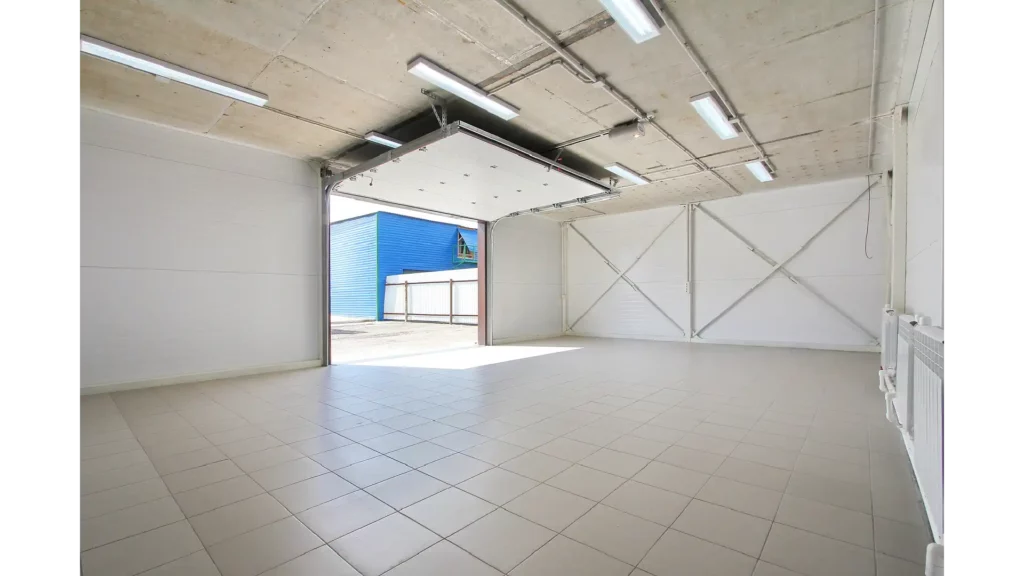
The Future of Efficient Garage Lighting: Innovations and Trends
Efficient garage lighting is advancing with technology, sustainability, and personalization.
Homeowners want energy-efficient and smart solutions for their garages, leading to new levels of control, customization, and conservation.
- Integration with Smart Home Systems
Future garage lighting will integrate with smart home systems for centralized control over lighting, security, and energy.
Users can adjust settings via voice or apps, enhancing convenience and energy efficiency through automation based on usage and presence.
- Advancements in LED Technology
LED technology is advancing to offer brighter light with less energy. Future LEDs may be more durable and suitable for extreme conditions like garages.
- Solar-Powered Lighting Innovations
Advancements in solar technology will make garage lighting more efficient and affordable. Better photovoltaic cells will lead to smaller, powerful panels, making solar lighting accessible to more homeowners and decreasing reliance on the grid.
- Dynamic Lighting Systems
New technologies will create dynamic lighting that changes intensity, color, and temperature like natural daylight. This will improve comfort, productivity, and well-being by aligning with circadian rhythms.
- Energy Harvesting Technologies
Energy harvesting innovations could revolutionize garage lighting by using kinetic energy from garage doors or thermal energy from the environment. This would reduce electrical consumption and improve sustainability.
- Augmented Reality (AR) and Lighting
Augmented reality apps help with lighting setups by providing interactive 3D visualizations before installation, aiding in designing efficient layouts to reduce waste and ensure optimal illumination.
Efficient Garage Lighting Conclusion
Efficient garage lighting is a smart investment for any homeowner. It enhances the functionality and safety of your space while being kind to your wallet and the environment.
With the right planning and choice of lighting, your garage can become a bright, energy-efficient area suitable for any number of activities.
By incorporating efficient garage lighting into your home, you're taking a step towards a more sustainable and functional living space. Remember, every little bit helps in our journey toward energy efficiency and environmental stewardship.
Source
https://www.energystar.gov/buildings/save-energy-commercial-buildings/ways-save/upgrade-lighting

